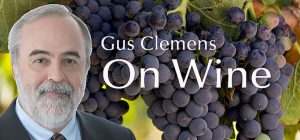Wine tannins are the little girl with the curl. When they are good, they are very good indeed. But when they are bad they are horrid.
They are horrid because that is what nature wants tannins to be. Tannins are the astringent, unpleasant taste in unripe fruit that deters animals from eating a plant’s fruit and seeds before they are ripe. Tannins from tree bark is used to tan animal hides. Neither appetizing.
When managed, however, tannins are delicious. Tannins are essential elements of tea, coffee, dark chocolate, wine.
Tannin is a collective term for phenolic compounds that bind and precipitate—separate—proteins from a solution. Your saliva is full of protein. Tannins bind with the proteins to make your mouth feel dry. Protein binding is why red wine pairs so well with marbled steak, counteracting and complementing fattiness of meat.
Wine tannins come from four sources. Grape skins. Seeds. Stems. Wood barrels used for aging. White wine is typically made from clear juice pressed when grapes—whatever color—reach the winery. Red wines, on the other hand, are made from the entire grape, including elements that contribute tannins.
Tannin texture varies and is important. Descriptors include velvety, plush, silky. All good. So, too, “grippy”—tannins that are noticeable but unobtrusive. Similarly “polished” or “elegant” tannins are noticeable but pleasing. “Green” is not praise. Green tannins are bitter, astringent. Bitter refers to taste. Astringent refers to the tactile sensation in your mouth. These are the tannins you do not enjoy.
Tannins mature with age. Their molecules combine and form larger chains—polymerization—which results in a smoother mouthfeel. It also causes some to fall out of suspension, creating sediment. That’s why aged wines have sediment, and why sediment can be an indicator of quality even if it looks icky in the bottom of your glass. Little girl with the curl.
Tasting notes:
• CVNE Bela Ribera del Duero Red Wine 2017: Meaty tempranillo. Structure, depth for this price point. $14-17 Link to my review
• Castello ColleMassari “Colle Massari” Montecucco Rosso Riserva DOC 2015: Robust; earthy; significant tannins. Maker recommends decanting; so do I. $24 Link to my review
• Black Stallion Estate Winery Cabernet Sauvignon, Napa Valley 2016: Fruit-forward Napa that refrains from too much oak, over-the-top ripeness, massive alcohol. Bravo. $25-31 Link to my review
• Sosie Wines Roussanne, Vivio Vineyard–Bennett Valley, Sonoma Valley 2015: Distinctive, wonderfully delicious. Exotic grape for California. $38 Link to my review
Last round: If your problem can not be solved with duct tape, WD-40, or a bottle of wine, then realize your problem will not be solved.

